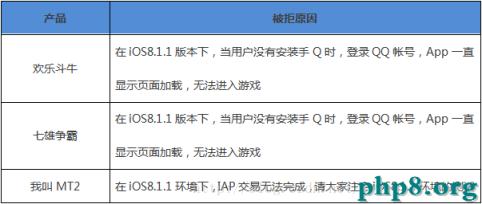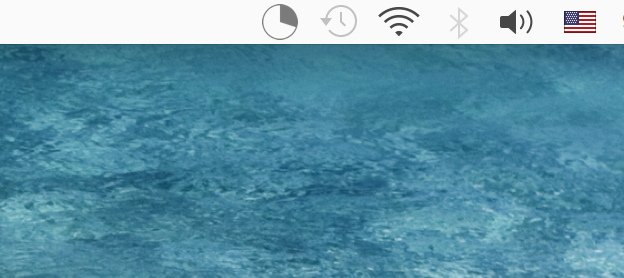ios獲取mac地址
編輯:IOS開發綜合
首先說明下,下面兩種方法均可以獲得手機的mac地址,但是有個限制,是在iOS一下才可以獲得。iOS7以後蘋果對於sysctl和ioctl進行了技術處理,MAC地址返回的都是02:00:00:00:00:00。官方文檔上這樣寫的“Twolow-level networking APIs that used to return a MAC address now return thefixed value 02:00:00:00:00:00. The APIs in question are sysctl(NET_RT_IFLIST) and ioctl(SIOCGIFCONF). Developers using the value of the MAC address should migrate toidentifiers such as -[UIDevice identifierForVendor].This change affects all apps running on iOS 7”。
所以在iOS7以後想要獲取設備的唯一標示Mac地址已經不行了,只能用其他的代替。
下面說下兩種方式:
都需要導入幾個頭文件
[html] view plaincopyprint?
- #include
- #include
- #include
方法1:
[html] view plaincopyprint?
- // Return the local MAC addy
- // Courtesy of FreeBSD hackers email list
- // Accidentally munged during previous update. Fixed thanks to mlamb.
- - (NSString *) macaddress
- {
- int mib[6];
- size_t len;
- char *buf;
- unsigned char *ptr;
- struct if_msghdr *ifm;
- struct sockaddr_dl *sdl;
- mib[0] = CTL_NET;
- mib[1] = AF_ROUTE;
- mib[2] = 0;
- mib[3] = AF_LINK;
- mib[4] = NET_RT_IFLIST;
- if ((mib[5] = if_nametoindex(en0)) == 0) {
- printf(Error: if_nametoindex error/n);
- return NULL;
- }
- if (sysctl(mib, 6, NULL, &len, NULL, 0) < 0) {
- printf(Error: sysctl, take 1/n);
- return NULL;
- }
- if ((buf = malloc(len)) == NULL) {
- printf(Could not allocate memory. error!/n);
- return NULL;
- }
- if (sysctl(mib, 6, buf, &len, NULL, 0) < 0) {
- printf(Error: sysctl, take 2);
- return NULL;
- }
- ifm = (struct if_msghdr *)buf;
- sdl = (struct sockaddr_dl *)(ifm + 1);
- ptr = (unsigned char *)LLADDR(sdl);
- NSString *outstring = [NSString stringWithFormat:@%02x:%02x:%02x:%02x:%02x:%02x, *ptr, *(ptr+1), *(ptr+2), *(ptr+3), *(ptr+4), *(ptr+5)];
- // NSString *outstring = [NSString stringWithFormat:@%02x%02x%02x%02x%02x%02x, *ptr, *(ptr+1), *(ptr+2), *(ptr+3), *(ptr+4), *(ptr+5)];
- NSLog(@outString:%@, outstring);
- free(buf);
- return [outstring uppercaseString];
- }
源自http://blog.csdn.net/showhilllee方法2:
[html] view plaincopyprint?
- - (NSString *)getMacAddress
- {
- int mgmtInfoBase[6];
- char *msgBuffer = NULL;
- size_t length;
- unsigned char macAddress[6];
- struct if_msghdr *interfaceMsgStruct;
- struct sockaddr_dl *socketStruct;
- NSString *errorFlag = NULL;
- // Setup the management Information Base (mib)
- mgmtInfoBase[0] = CTL_NET; // Request network subsystem
- mgmtInfoBase[1] = AF_ROUTE; // Routing table info
- mgmtInfoBase[2] = 0;
- mgmtInfoBase[3] = AF_LINK; // Request link layer information
- mgmtInfoBase[4] = NET_RT_IFLIST; // Request all configured interfaces
- // With all configured interfaces requested, get handle index
- if ((mgmtInfoBase[5] = if_nametoindex(en0)) == 0)
- errorFlag = @if_nametoindex failure;
- else
- {
- // Get the size of the data available (store in len)
- if (sysctl(mgmtInfoBase, 6, NULL, &length, NULL, 0) < 0)
- errorFlag = @sysctl mgmtInfoBase failure;
- else
- {
- // Alloc memory based on above call
- if ((msgBuffer = malloc(length)) == NULL)
- errorFlag = @buffer allocation failure;
- else
- {
- // Get system information, store in buffer
- if (sysctl(mgmtInfoBase, 6, msgBuffer, &length, NULL, 0) < 0)
- errorFlag = @sysctl msgBuffer failure;
- }
- }
- }
- // Befor going any further...
- if (errorFlag != NULL)
- {
- NSLog(@Error: %@, errorFlag);
- return errorFlag;
- }
- // Map msgbuffer to interface message structure
- interfaceMsgStruct = (struct if_msghdr *) msgBuffer;
- // Map to link-level socket structure
- socketStruct = (struct sockaddr_dl *) (interfaceMsgStruct + 1);
- // Copy link layer address data in socket structure to an array
- memcpy(&macAddress, socketStruct->sdl_data + socketStruct->sdl_nlen, 6);
- // Read from char array into a string object, into traditional Mac address format
- NSString *macAddressString = [NSString stringWithFormat:@%02x:%02x:%02x:%02x:%02x:%02x,
- macAddress[0], macAddress[1], macAddress[2],
- macAddress[3], macAddress[4], macAddress[5]];
- NSLog(@Mac Address: %@, macAddressString);
- // Release the buffer memory
- free(msgBuffer);
- return macAddressString;
- }
相關文章
+



